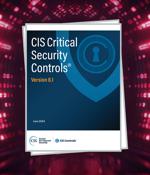Security News

In an era of relentless cybersecurity threats and rapid technological advancement, staying ahead of the curve is not just a necessity, but critical. SANS Institute, the premier global authority in cybersecurity training, is thrilled to announce Network Security 2024, a landmark event designed to empower cybersecurity professionals with groundbreaking skills, knowledge and insights.

This tool helps security teams validate SSH implementations by testing for uncommon but dangerous misconfigurations and software bugs. Activities intended to aid in responding to the incident led runZero's research team to discover weaknesses across SSH implementations and applications that impact critical network security devices and software.

A critical security flaw impacting Progress Software WhatsUp Gold is seeing active exploitation attempts, making it essential that users move quickly to apply the latest. The vulnerability in question is CVE-2024-4885, an unauthenticated remote code execution bug impacting versions of the network monitoring application released before 2023.1.3.

In this Help Net Security interview, Kojin Oshiba, co-founder of Robust Intelligence, discusses his journey from academic research to addressing AI security challenges in the industry. What motivated you to specialize in the security aspects of AI systems?

Version 8.1 of the CIS Critical Security Controls is an iterative update to version 8.0. Included new and expanded glossary definitions for reserved words used throughout the Controls Revised asset classes alongside new mappings to CIS Safeguards.

Black Hat Computer security researchers at the CISPA Helmholtz Center for Information Security in Germany have found serious security flaws in some of Alibaba subsidiary T-Head Semiconductor's RISC-V processors. Thus the security issues here with the C910 lie with T-Head's own implementation of the ISA, specifically its non-standard implementation of the vector extension, and not the specs themselves nor other RISC-V chips.

A credit card or PayPal account is required for purchase. You will be billed the total shown above and you will receive a receipt via email once your payment is processed.

The sports and entertainment sectors are distinct from other industries and continue to face numerous threats and challenges. In our highly connected world, the rise of digital twins and collaboration across various platforms is transforming the sports landscape into an interconnected business network.

In this Help Net Security interview, Doug Madory, Director of Internet Analysis at Kentik, discusses the FCC's proposal requiring major U.S. ISPs to implement RPKI Route Origin Validation, and addresses concerns about the impact on smaller ISPs and the global implications of U.S.-mandated changes. Regulatory mandates on BGP security could impose significant burdens on smaller ISPs, particularly regarding their ability to adapt to emerging security standards.

CrowdStrike has hired two outside security firms to review the Falcon sensor code that sparked a global IT outage last month - but it may not have an awful lot to find, because CrowdStrike has identified the simple mistake that caused the incident. The update went through the usual development and testing, and then CrowdStrike pushed a new "Template Type" including the IPC-related info to its Falcon sensors in a "Channel File" numbered 291.